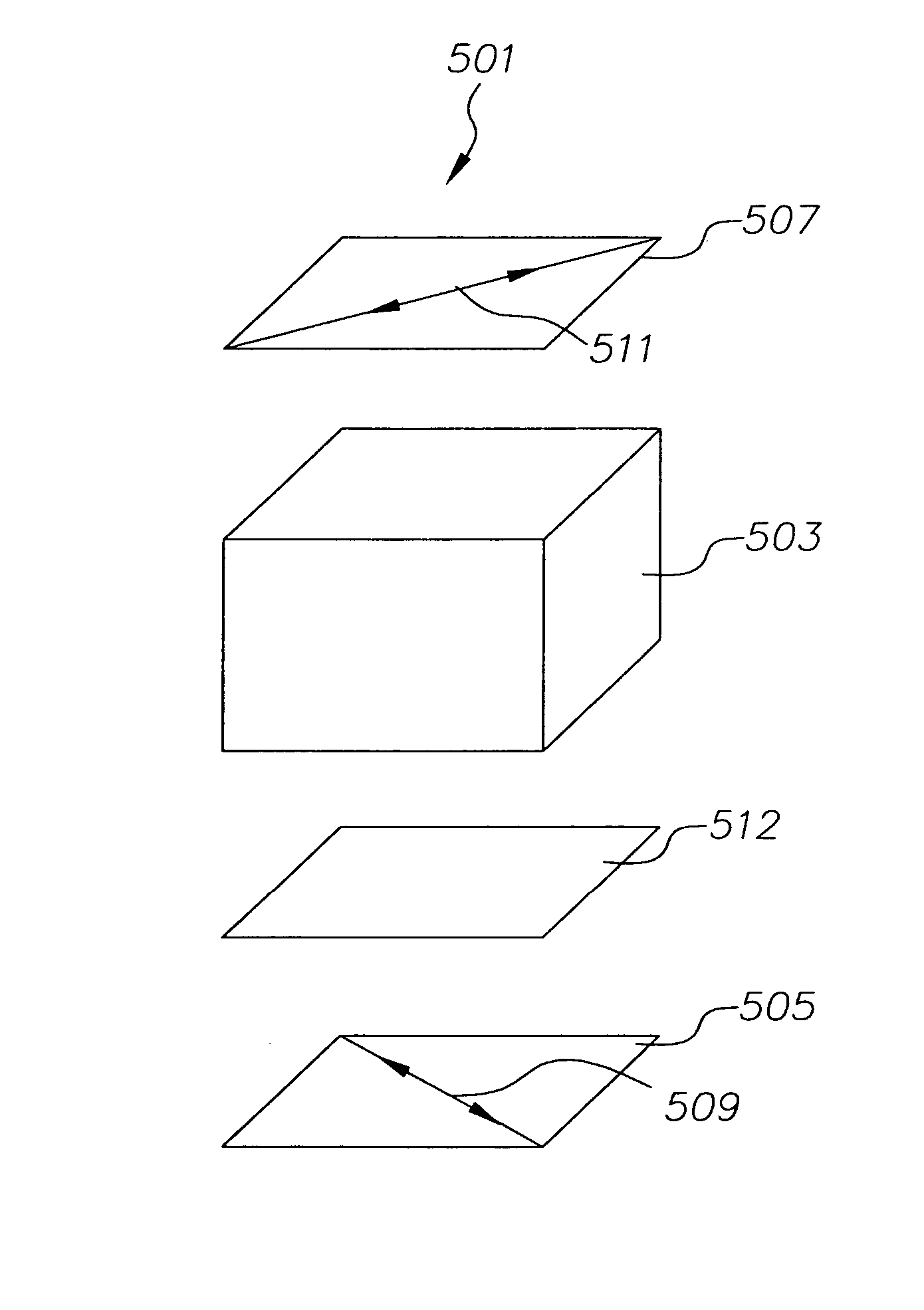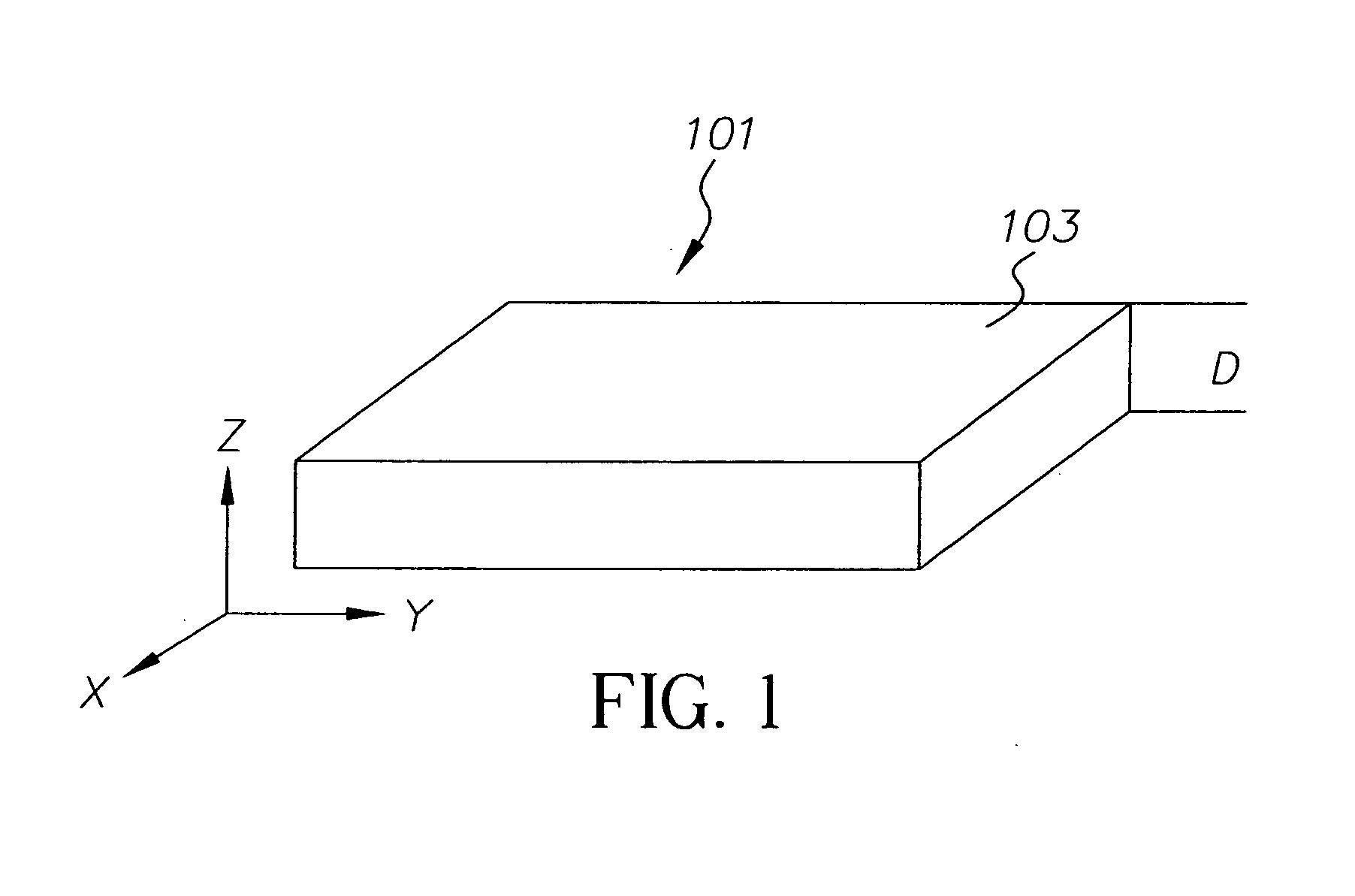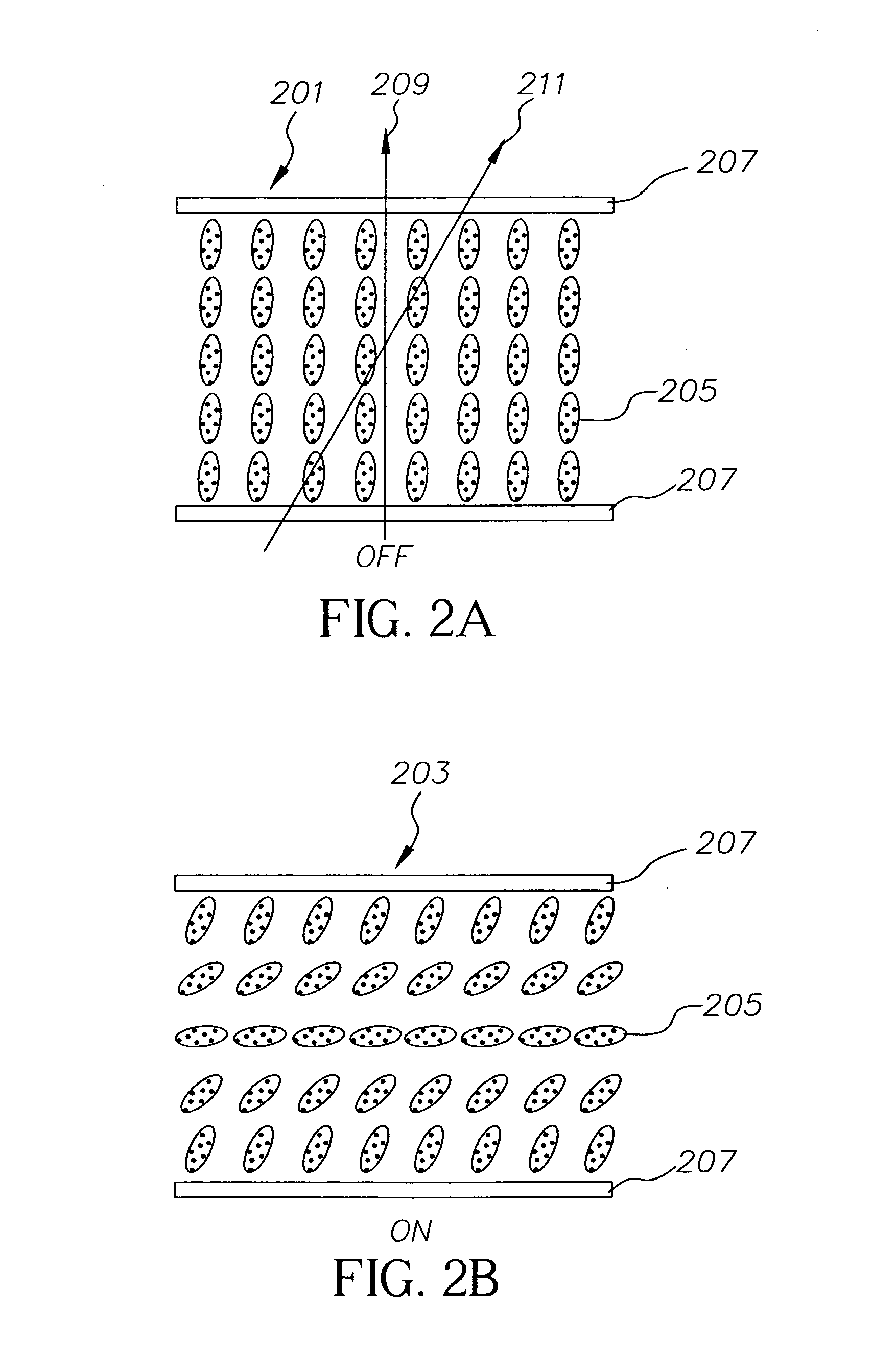Multilayer optical compensator, liquid crystal display, and process
- Summary
- Abstract
- Description
- Claims
- Application Information
AI Technical Summary
Benefits of technology
Problems solved by technology
Method used
Image
Examples
Embodiment Construction
[0022] The following definitions apply to the description herein:
[0023] Optic axis refers to the direction in which propagating light does not see birefringence.
[0024] ON and OFF state refers to the state with and without applied voltage to the liquid crystal cell.
[0025] In-plane retardation, Rin, of a layer 101 shown in FIG. 1 is a quantity defined by (nx-ny)d, where nx and ny are indices of refraction in the direction of x and y. The x axis is taken as a direction of maximum index of refraction in the x-y plane and the y direction is perpendicular to the x axis. Thus Rin will always be a positive quantity. The x-y plane is parallel to the plane 103 of the layer. d is a thickness of the layer in the z-direction. The quantity (nx-ny) is referred to as in-plane birefringence, Δnin. It also will always have positive values. The values of Δnin and Rin hereafter are given at wavelength λ=550 nm.
[0026] Out of-plane retardation Rth of a layer 101 shown in FIG. 1, herein, is a quantity...
PUM
| Property | Measurement | Unit |
|---|---|---|
| Temperature | aaaaa | aaaaa |
| Fraction | aaaaa | aaaaa |
| Time | aaaaa | aaaaa |
Abstract
Description
Claims
Application Information
 Login to view more
Login to view more - R&D Engineer
- R&D Manager
- IP Professional
- Industry Leading Data Capabilities
- Powerful AI technology
- Patent DNA Extraction
Browse by: Latest US Patents, China's latest patents, Technical Efficacy Thesaurus, Application Domain, Technology Topic.
© 2024 PatSnap. All rights reserved.Legal|Privacy policy|Modern Slavery Act Transparency Statement|Sitemap



